Health & Wellbeing Progress, 2018-22

We will strive to enhance the physical and mental health as well as the quality of life of our campus community.
2018 Pitt Sustainability Plan Goals
- BUILDINGS: Embrace LEED and WELL Building certifications and WELL Communities for our built environment.
- SPACE: Identify and improve the environmental quality of our indoor and outdoor spaces.
- MOVEMENT: Support physical health through fitness access and active design principles.
- HAPPINESS: Support the mental health needs of our students, faculty, and staff.
Where We Are: Healthy Buildings
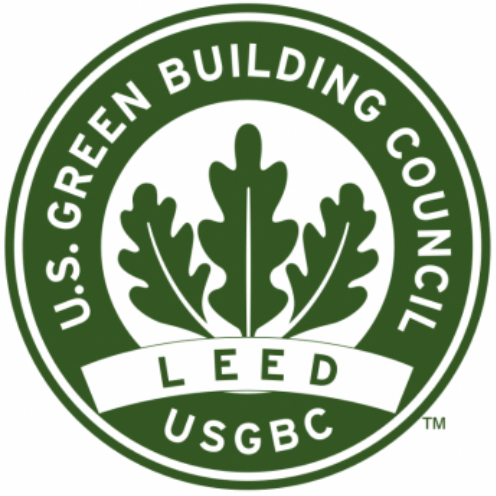
- Certified Green Buildings: To date, Pitt has obtained the third-party LEED green building certification for 17 building projects totaling over 1.3 million square feet. All large University new construction and major renovation projects pursue LEED or better. LEED-certified buildings help enhance the health and well-being of the building’s occupants via increased ventilation, indoor air quality management plans, low-emitting construction materials, and access to daylight and views.
- New Campus Recreation & Wellness Center: The Campus Recreation & Wellness Center will be a total health & wellness destination providing new campus connections & showcasing Pitt’s commitment to sustainability. In design since 2018, the Center is pursuing LEED certification with plans to open Fall 2024, providing 270,000 square feet of first-rate amenities and services that encompass all aspects of health and wellness. The Campus Recreation & Wellness Center embodies a holistic approach to support and enrich the student experience.
- Pittsburgh 2030 District: The Pittsburgh 2030 District encompasses 550+ buildings aspiring towards measured high performance of 50% reductions in energy use, water consumption, and transportation emissions by the year 2030 while improving indoor air quality. The University of Pittsburgh was a Founding Property Partner of the Pittsburgh 2030 District’s Oakland boundary in 2014– and 2030 goals permeate the Pitt Sustainability Plan. From 2014 through 2018, Pitt also assisted District Partners in assessing indoor quality and helped create the foundations for the District’s Indoor Air Quality (IAQ) baseline. The University also participates in regular District-wide IAQ reporting and benchmarking.
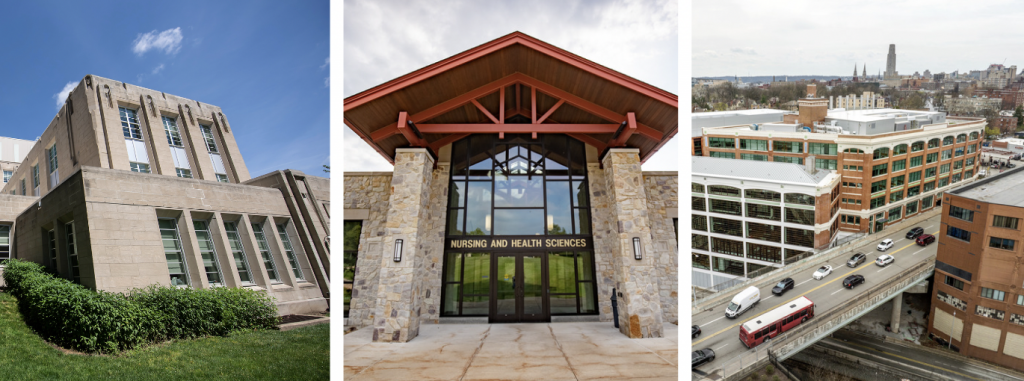
- Health Indoors: Pitt is working to help improve the health and well-being of community members through improved air quality. The quality of indoor air is monitored by Facilities via maintenance, occupants, and controls. Pitt also uses Aircuity systems to monitor and adjust indoor air quality and ventilation in over 125,316 square feet of space.
Where We Are: Holistic Well-Being
Live Well Pitt: In Spring 2019, a student project for the GEOL 1333: Sustainability course collaborated with Pitt IT to create a “Live Well Pitt” module on the Pitt Mobile App. The Live Well Pitt module includes sections on Financial Wellness, Emotional Wellness, Social Wellness, Physical Wellness, Environmental Wellness, and Sustainability on Campus; the latter two app categories are now maintained by the Office of Sustainability.
Thrive @ Pitt: Launched in 2021, Thrive @ Pitt is an online resource from the Campus Well-Being Consortium developed to support and maintain all aspects of student well-being by promoting and improving accessibility to various resources relevant to our diverse student body. The site is focused on multi-dimensional well-being, including physical, emotional, intellectual, spiritual, environmental, financial, occupational, and social.
Wellness for Life: For Pitt employees, Pitt Human Resources has a Wellness for Life webpage that includes resources relating to physical, emotional, financial, environmental, intellectual, occupational, social, and mindful wellness. Additionally, starting in FY23, Health Incentive Account dollars earned for doing voluntary wellness activities can be used like flexible spending account money.
Where We Are: Healthy Outdoor Spaces
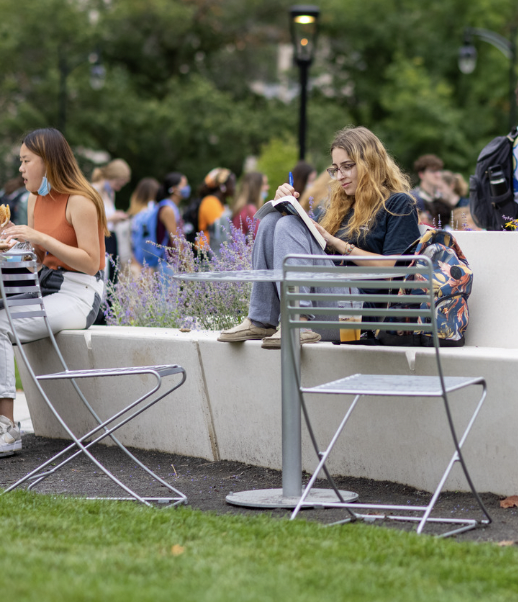
Outdoor Spaces: University of Pittsburgh’s Pitt’s Campus and Institutional Master Plans explicitly address strategies to improve the quality of Pitt’s outdoor spaces via open space, tree cover, mobility, planting improvements, and more. Implemented in 2017, these guidelines are outlined in Facilities Management’s Professional Design Manual Division S. Utilizing sustainable landscape practices—such as the inclusion of rain gardens to mitigate stormwater or planting of diverse and native flora—creates resilient environments with multiple benefits including but not limited to reducing heat island effects, improving air quality, and positively impacting mental wellbeing.
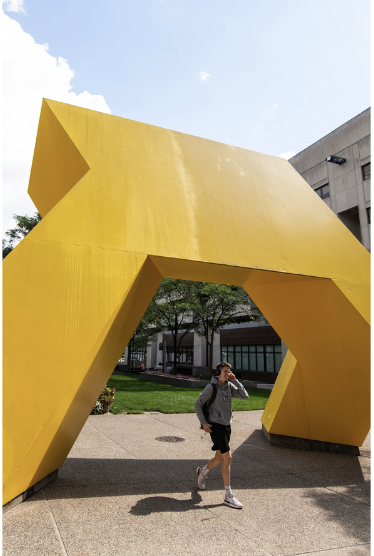
Pitt has a goal to increase public realm green space 15% by 2031. Campus landscape and ecology efforts include trees; edible, pollinator, and rain gardens; and green roofs.
Founded in 2020, the University’s Public Art Committee works to engage the Pitt community in seeking new and exciting ways public art can be utilized on campus to further stimulate meaningful discussions, enrich the learning experience, and positively impact community well-being. Pitt recognizes and is working to expand the transformative effect public art has on our community, including by inventorying all artworks owned by the University.
Where We Are: Active Bodies
Wellness & Recreation: Pitt’s student body is very physically active as demonstrated by student organizations, intramurals, club sports, group fitness classes, and open recreation.
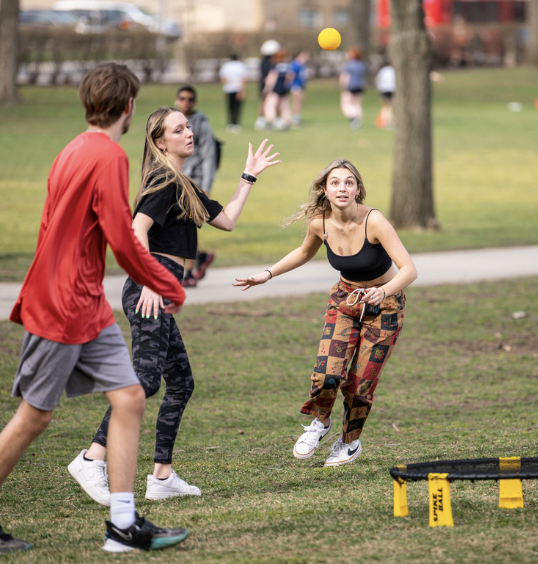
- Interest in physical activity options on campus is strong with 604,000 views of Pitt’s campus recreation website in Fall 2022 and ~8,000 followers on Instagram.
- University stakeholders developing campus-wide wellness and campus recreation activities (including outreach, group exercise, care, and support interventions) work to be grounded in cultural humility that supports Pitt’s diverse student population.
- In Fall 2022 alone, Campus Recreation facilities were booked by student organizations 2,550 times for a total of 5,193 hours.
Pitt’s Fall 2022 Intramurals program welcomed 1,924 unique participants, with 371 individuals participating in multiple intramural sports. Refined and expanded intramural offerings including co-ed volleyball, cornhole, pop-a-shot, flag football, and smaller team basketball and soccer.
- In Fall 2022, Pitt’s student club sports welcomed 44 competitive and 22 recreational clubs, reaching over 2,000 collective participants, 38 on-campus competitions, and 100 club sport competitions (home and away). UPMC athletic trainers performed 198 injury evaluations and treatments for club sport participants in Fall 2022, helping ensure that Pitt’s club sports athletes participate in physical activity and competitions safely.
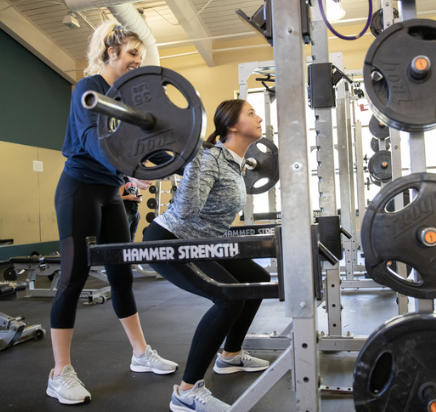
Accessible to the entire Pitt community, the University’s group fitness offerings are robust, ranging from rock climbing to yoga. The Fall 2022 semester alone engaged 1,406 participants in 40 weekly group fitness classes (each over 10 weeks of classes) for a total of 400 in the semester. Campus Recreation also completed 101 wellness consultations and 232 personal training sessions with students in Fall 2022.
Get Active: Future organized campus physical activities will include more inclusive, accessible, and collaborative offerings, including working to reach every student living on-campus. Efforts will include more “Intro to” series for activities like biking, climbing, and weight training, as well as additional co-ed and non-competitive intramural offerings that offer physical activity while enhancing social relationships like capture the flag, eSports, and spikeball. New programming will be offered for students with non-dominant identities, make space for creativity, and focus on the overlap between physical, mental, and environmental wellness (including an outdoor recreation therapy series and therapy dog visits).
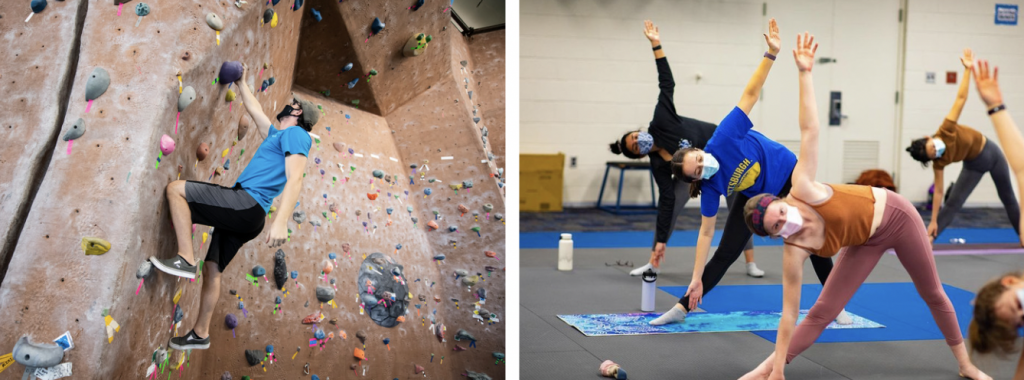
Active Campus:
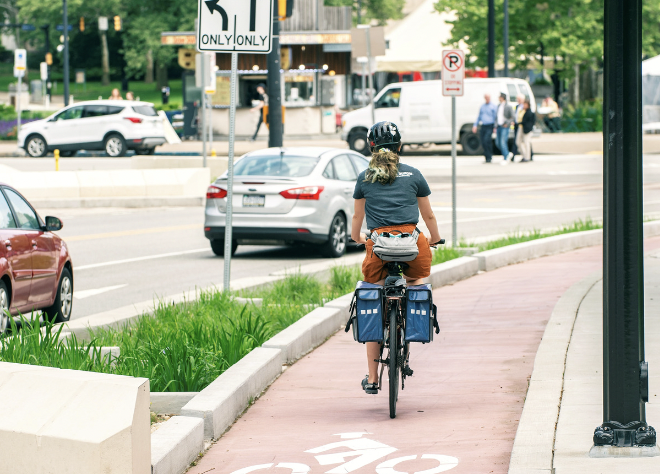
In 2021, Bigelow Boulevard became Pitt’s first Complete Street by creating a safer and more accessible route for pedestrians, cyclists, and vehicles on the heavily trafficked section of road linking Fifth and Forbes Avenue. Increasing inclusive connectivity around campus promotes active mobility options that positively impact health.
- In 2020, Pitt started partnering with POGOH to provide free 30-minute bike rides to students and employees. The University also designs all new buildings to have visible stairwells and walking connections between buildings to encourage occupants to be physically active.
Panther Walking Route: Envisioned as the first of several campus walking routes, the Panther Walking Route was created in 2018 to promote physical activity. It includes 10 stops across the Pittsburgh campus, each with signage that includes a QR code for participants to learn more about the history, architecture, and sustainability facts related to that location.

Where We Are: Individual Health

Covid Sick Bank: To assist full and part-time employees during the Covid-19 pandemic, a Temporary Voluntary Sick Day Bank was created. During the height of the pandemic, employees had the opportunity to make a one-time donation to the bank and/or request additional sick time. During this time 18,333 hours were donated by 218 employees, assisting 91 employees so far with 4,839 hours of sick time.
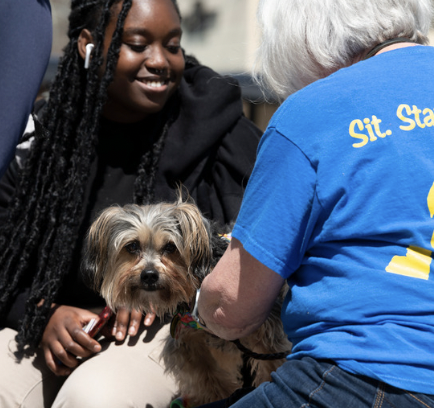
Year of Emotional Well-Being: Since 2014, the University of Pittsburgh has celebrated a “Year of” initiative, with past themes including sustainability, creativity, and engagement. The 2022-23 academic year is the Year of Emotional Well-Being, which aids our ability to manage stress, overcome adversity, reduce feelings of negativity, and approach life in a positive manner.
The pandemic underscored the importance of fully supporting the emotional welfare of students, faculty, and staff.